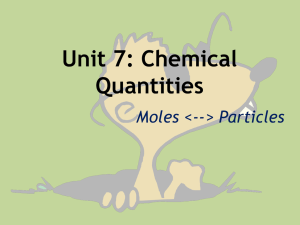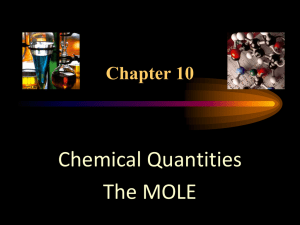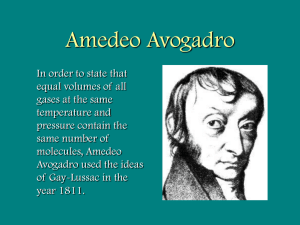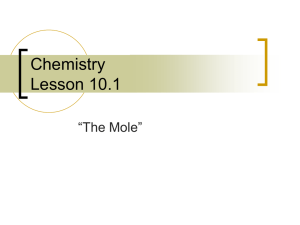Chapter 7 Section 1
advertisement
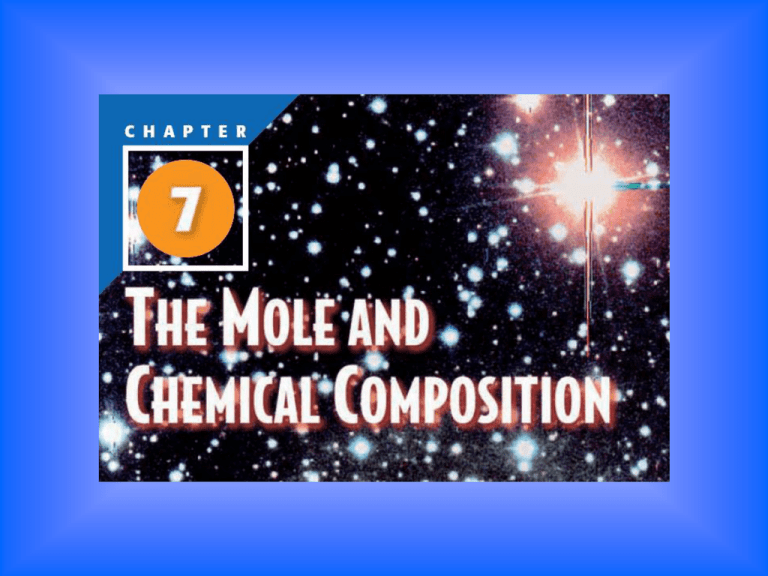
Avogadro’s Number and the Mole Atoms, ions, and molecules are very small, so even tiny samples have a huge number of particles. To make counting such large numbers easier, scientists use the same approach to represent the number of ions or molecules in a sample as they use for atoms. The SI unit for amount is called the mole (mol). A mole is the number of atoms in exactly 12 grams of carbon-12. The number of particles in a mole is called Avogadro’s number or Avogadro’s constant. One way to determine this number is to count the number of particles in a small sample and then use mass or particle size to find the amount in a larger sample. This method works only if all of the atoms in the sample are identical. Thus, scientists measure Avogadro’s number using a sample that has atoms of only one isotope. The most recent measurement of Avogadro’s number shows that it is 6.02214199 × 1023 units/mole. In this class, the measurement is rounded to 6.022 × 1023 units/mol. Avogadro’s number is used to count any kind of particle. The Mole Is a Counting Unit Moles Multiply by 6.022 x 1023 Divide by 6.022 x 1023 # of Particles 1. How many ions are there in 0.187 mol of Na+ ions? 1.13 x 1023 ions of Na+ 2. How many atoms are there in 1.45 × 10−17 mol of arsenic? 8.73 x 106 ions of arsenic or 8,730,000 ions of arsenic 3. How many molecules are there in 4.224 mol of acetic acid, C2H4O2? 2.544 x 1024 ions of C2H4O2 4. How many formula units are there in 5.9 mol of NaOH? 3.6 x 1024 ions of NaOH 1. How many moles of xenon do 5.66 × 1023 atoms equal? 0.940 moles of xenon 2. How many moles of silver nitrate do 2.888 × 1015 formula units equal? 4.796 x 10-9 moles of silver nitrate 3. A biologist estimates that there are 2.7 × 1017 termites on Earth. How many moles of termites is this? 4.5 x 10-7 moles of termites 4. How many moles do 5.66 × 1025 lithium ions, Li+, equal? 9.40 x 101 moles of Li+ or 94.0 moles of Li+


